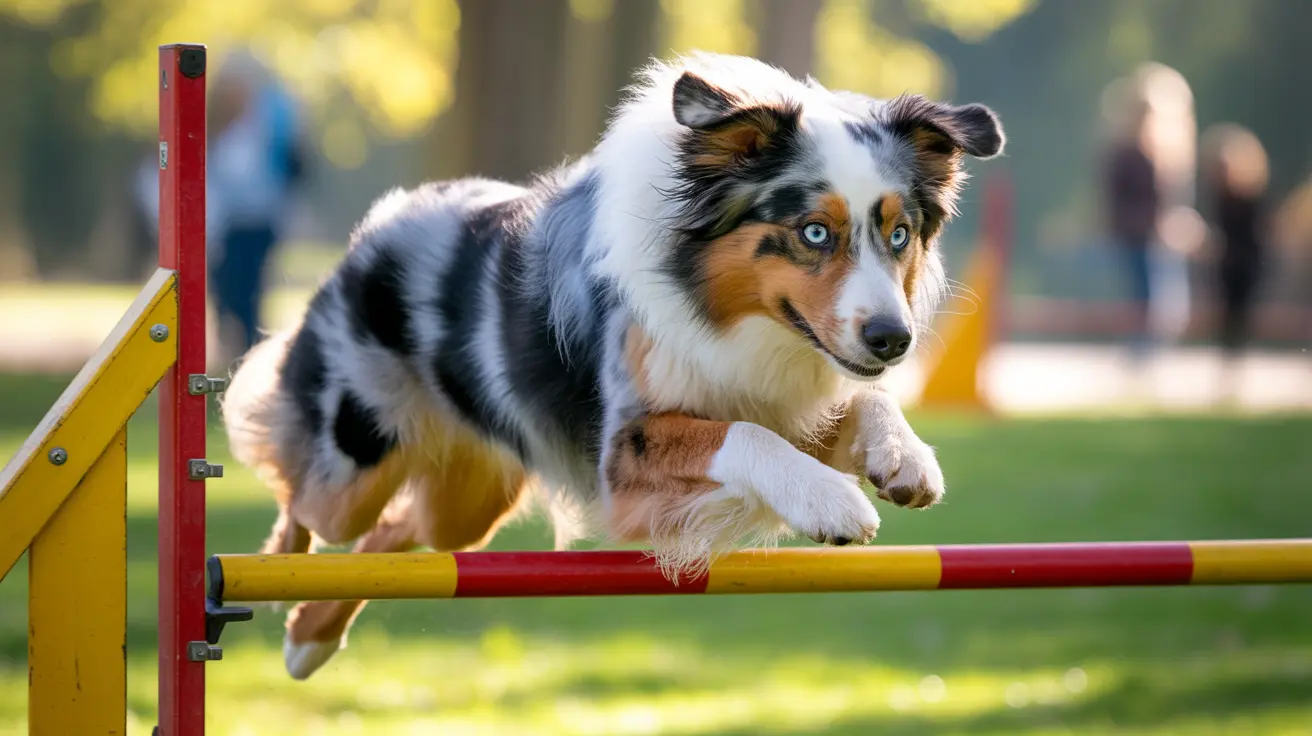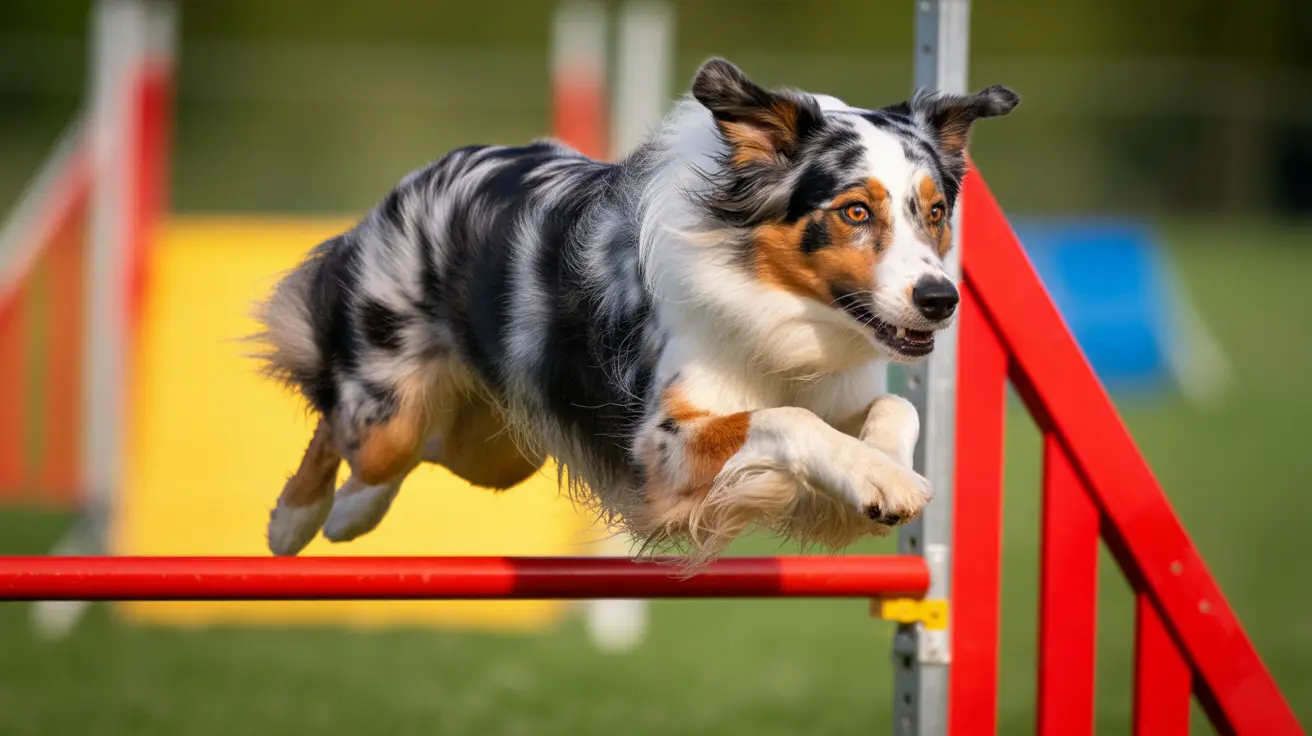What is Canine OCD?
Obsessive-compulsive disorder (OCD) in dogs, also known as canine compulsive disorder (CCD), is a complex behavioral condition that causes dogs to perform normal behaviors in excessive, repetitive ways. These behaviors become so intense that they interfere with the dog's daily life and can potentially cause physical harm.
Just like humans with OCD, affected dogs feel compelled to perform certain actions repeatedly, often unable to stop even when it becomes detrimental to their wellbeing. Understanding these behaviors is crucial for early intervention and successful treatment.
Common Symptoms of OCD in Dogs
Dogs with OCD typically display specific repetitive behaviors that are difficult to interrupt. These behaviors often start as normal canine activities but become exaggerated and persistent over time.
Physical Symptoms
Common physical manifestations include:
- Excessive licking or chewing of body parts
- Tail chasing and spinning
- Flank sucking (especially in Doberman Pinschers)
- Persistent pacing or circling
- Shadow or light chasing
- Fly snapping (biting at invisible flies)
Behavioral Signs
Beyond physical symptoms, dogs may exhibit:
- Increased anxiety and restlessness
- Difficulty settling or relaxing
- Disrupted sleep patterns
- Heightened sensitivity to environmental changes
- Social withdrawal or changes in interaction patterns
Causes and Risk Factors
The development of OCD in dogs typically involves multiple factors:
Genetic Predisposition
- Certain breeds show higher susceptibility
- Inherited neurochemical imbalances
- Family history of compulsive behaviors
Environmental Triggers
- Chronic stress or anxiety
- Lack of physical exercise
- Insufficient mental stimulation
- Major life changes or trauma
- Social isolation
Diagnosis and Treatment Options
Diagnosing OCD in dogs requires a comprehensive approach:
Professional Assessment
- Complete veterinary examination
- Behavioral history evaluation
- Ruling out medical conditions
- Consultation with veterinary behaviorists
Treatment Strategies
Treatment typically involves a multi-faceted approach:
- Behavior modification therapy
- Environmental enrichment
- Medication (when necessary)
- Stress reduction techniques
- Regular exercise and mental stimulation
Prevention and Management
While some cases of OCD are genetically predisposed, there are several ways to reduce risk and manage symptoms:
- Establish consistent daily routines
- Provide adequate physical exercise
- Ensure mental stimulation through games and training
- Create a calm, structured environment
- Monitor and manage stress levels
- Maintain regular veterinary check-ups
Frequently Asked Questions
What are the most common symptoms of obsessive-compulsive disorder (OCD) in dogs?
The most common symptoms include excessive licking or chewing, tail chasing, spinning, pacing, shadow chasing, and fly snapping. These behaviors become repetitive and difficult to interrupt.
How do veterinarians diagnose OCD in dogs and rule out other medical causes?
Veterinarians perform comprehensive physical examinations, review behavioral history, conduct blood tests, and may recommend neurological evaluations to rule out other medical conditions before diagnosing OCD.
What treatment options are available to manage OCD behaviors in dogs?
Treatment options include behavior modification therapy, environmental enrichment, anti-anxiety medications, stress reduction techniques, and regular exercise routines tailored to the individual dog's needs.
Which dog breeds are more prone to developing OCD and why?
Certain breeds like Doberman Pinschers, German Shepherds, Bull Terriers, and Border Collies show higher rates of OCD due to genetic predisposition and high-energy, intelligent temperaments.
How can I help prevent or reduce compulsive behaviors in my dog at home?
Provide regular exercise, mental stimulation, maintain consistent routines, create a calm environment, and address anxiety triggers promptly. Early intervention is key to preventing behaviors from becoming ingrained.
Conclusion
OCD in dogs is a serious condition that requires understanding, patience, and proper medical intervention. With early recognition of symptoms and appropriate treatment, many dogs can experience significant improvement in their quality of life. Always consult with veterinary professionals for proper diagnosis and treatment plans tailored to your dog's specific needs.






